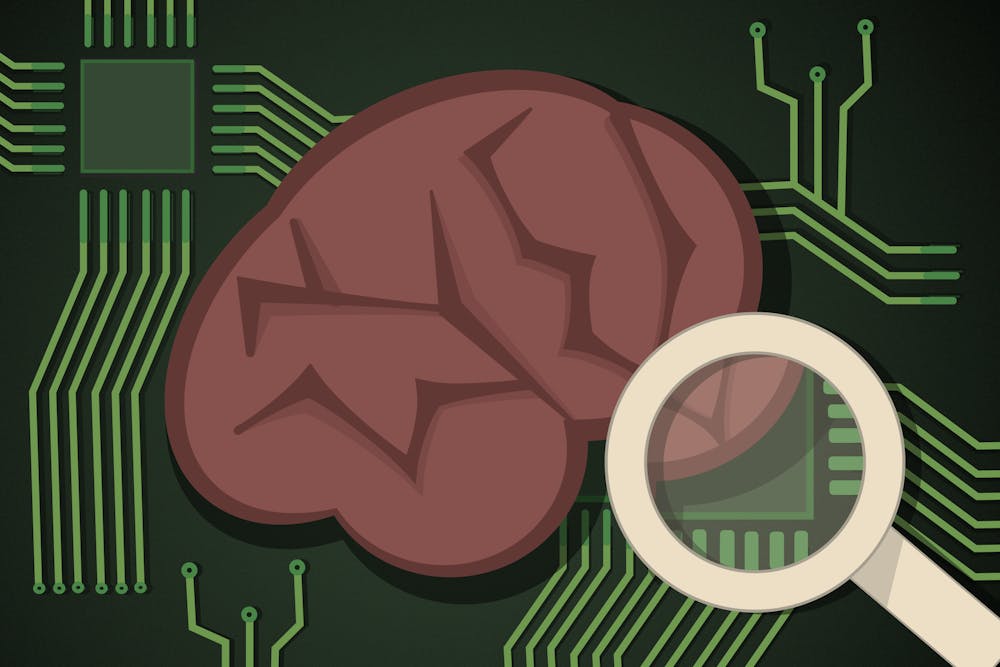A team of researchers at the University of South Carolina is working with AI to research autism spectrum disorder and ways to diagnose it at earlier ages.
Researchers on the team are a part of the Carolina Autism and Neurodevelopment Research Center on campus. According to their website, researchers at the center work to improve the lives of families and individuals with neurodevelopment disorders by advancing research and education around autism. Jessica Bradshaw, a professor of psychology at USC, leads a team of researchers examining how brain waves and heart rates could show signs of autism in the first few months of a child's life.
Typically, children who have autism spectrum disorder (ASD) are not diagnosed until they are 2 or older because behavioral signs have to show, Bradshaw said. As a result, there is not much data about autism in children younger than 2, she said.
“There’s no specific biomarkers, no blood tests, no single gene that causes autism, so we really can’t diagnose until those behavioral features are more prominent," Bradshaw said.
Caitlin Hudac, a professor of psychology, assists Professor Bradshaw in collecting data by observing children with autism. They assess observable traits, such as behavioral or cognitive responses, during their testing. The data collection is a large part of this research, but AI, otherwise known as machine learning, is used to help understand the data collected.
The team uses AI as an assistive tool to help understand the data collected, Christian O’Reilly, an associate professor of computer science and engineering at USC, said. O'Reilly is the third member of the team and oversees the AI aspects of the team's research.
O'Reilly said AI helps the team visualize relationships between the behavioral, environmental and genetic variables they observe in their testing. AI compares data sets and recognizes patterns between them, allowing the team to test assumptions they make while researching, he said.
“(The data) says how much of that assumption is true,” O’Reilly said. “So, it’s a completely different framework to phrase the problem and to investigate the problem.”
In their research, AI is used to understand complex relationships in the data, but there are many assumptions about it, O’Reilly said. Most people understand AI, or machine learning, in a science-fiction sense, but in actuality, it is simply an algorithm made to assist a person in completing a goal, he said.
“What we call AI and machine learning are very set algorithms,” O’Reilly said. “If you see the AI algorithm as a black box, so, you have two sets of variables ... and there's a complex relationship between the two, and you just want to use that box to learn that relationship. That’s the only thing that this algorithm does.”
There are a few challenges the team is continually working to overcome, such as finding a shared language between researchers and the complexity of autism spectrum disorder research, Hudac said.
Hudac said these researchers all have a different expertise or focus, and they don’t always have a shared understanding of all the topics involved. They work together to apply for grants and analyze the data on heart rates and brain waves collected, so it was essential for them to find shared terms or principles that they can all understand, she said.
“There’s a lot of equations that go into computer science and AI development,” Hudac said. “And that’s a challenging piece — to make sure that we’re able to talk about things in the same words and understand kind of the basic principles.”
O'Reilly said another issue in their research is that autism is a spectrum, meaning that everyone who has autism spectrum disorder presents it differently. These presentations often need to be tested differently because of how the individual is affected. Individuals of test groups could have higher results, while others may have lower results. These drastic differences make the average test results the same as a neurotypical group, which poses more challenges in collecting and assessing data, he said.
“All the classical approaches assume that that is a homogeneous group of people, and they are not,” O’Reilly said.
As a result, O'Reilly said the team is working to be able to group individuals together based on how they present to better understand the data they collect and help that group specifically.
So far in their research, they have been able to better understand and model how heart rates may indicate autism in infants with the help of AI, drawing clear relationships from test results, Bradshaw said.
Bradshaw said she hopes to continue this research and apply for other grants that will allow them to collect data in homes, making it easier for families to participate in their studies. Most data is collected in their lab, but she said they hope to be able to get more portable equipment that would allow them to go to more homes. Conducting studies in home environments makes the process easier on families and expands the team's test group, she said.
“We’ve done a lot of work to identify different systems and processes for collecting data in the home that’s just as rigorous as the data that we collect in the lab,” Bradshaw said. “I think that there’s still some improvements we can make with our in-home data collection, but that’s really exciting.”
AI is an important new avenue that could help to accelerate the understanding of autism spectrum disorder, Hudac said. It is essential that researchers understand how AI can impact this field of research and help kids in the long run, she said.
"We inherently live in a social world so figuring out a way that makes sense for them to live in the social world and be happy and satisfied is really important to the work we do in my lab," Hudac said.


